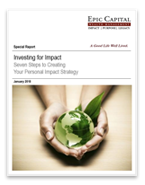SECURE ACT Lesser Known Provisions
Feb 20, 2020

The SECURE Act passed into law in late 2019 and changed several aspects of retirement investing. These modifications included modifying the ability to stretch an Individual Retirement Account (IRA) and changing the age when IRA holders must start taking requirement minimum distributions to 72-years-old.1,2
While those provisions grabbed the headlines, several other smaller parts of the SECURE Act have caught the attention of individuals who are raising families and paying off student loan debt. Here’s a look at a few.
Changes for college students. For those who have graduate funding, the SECURE Act allows students to use a portion of their income to start investing in retirement savings. The SECURE Act also contains a clause to include “aid in the pursuit of graduate or postdoctoral study.” A grant or fellowship would be considered income that the student could invest in a retirement vehicle.3
One other provision of The SECURE Act: you can use your 529 Savings Plan to pay for up to $10,000 of student debt. Money in a 529 Plan can also be used to pay for costs associated with an apprenticeship.4
Funds for a growing family. Are you having a baby or adopting? Under the SECURE Act, you can withdraw up to $5,000 per individual, tax-free from your IRA to help cover costs associated with a birth or adoption. However, there are stipulations. The money must be withdrawn within the first year of this life change; otherwise, you may be open to the tax penalty.5
Annuities and your retirement plan. This might be the most complicated part of the SECURE Act. It’s now easier for your employer-sponsored retirement plans to have annuities added to their investment portfolio. This was accomplished by reducing the fiduciary responsibilities that a company may incur in the event the annuity provider goes bankrupt. The benefit is that annuities may provide retirees with guaranteed lifetime income. The downside, however, is that annuities are often the incorrect vehicle for investors just starting out or far from retirement age.6
The best course is to make sure that you review any investment decisions or potential early retirement withdrawals with a trusted financial advisor today.
Key Takeaways:
1 – Under the SECURE Act, your required minimum distribution (RMD) must be distributed by the end of the 10th calendar year following the year of the Individual Retirement Account (IRA) owner’s death. A surviving spouse of the IRA owner, disabled or chronically ill individuals, individuals who are not more than 10 years younger than the IRA owner, and child of the IRA owner who has not reached the age of majority may have other minimum distribution requirements.
2 – Under the SECURE Act, in most circumstances, once you reach age 72, you must begin taking required minimum distributions from a Traditional Individual Retirement Account (IRA). Withdrawals from Traditional IRAs are taxed as ordinary income and, if taken before age 59½, may be subject to a 10% federal income tax penalty. You may continue to contribute to a Traditional IRA past age 70½ under the SECURE Act as long as you meet the earned-income requirement.
Tags: Education Planning, Estate Planning, Investment Planning, Legacy, Personal Finance, Retirement Planning, Secure Act
More Insights
Birthdays may seem less important as you grow older. They may not offer the impact of watershed moments such as getting a driver’s license at 16 and voting at 18. But beginning at age 50, there are several key birthdays that can affect your tax situation, health-care eligibility, and retirement benefits.
During times like these when geopolitical headlines can be unsettling for investors, we at LPL Research like to remind ourselves of one of our key investing principles. Markets have always faced challenges —ranging from geopolitical conflicts and economic downturns to natural disasters, political upheaval and health crises. These events often trigger short-term volatility and shake … Continue reading “Why Long Term Investing Beats Selling in Volatile Times”
Are you concerned about the inheritance taxes your heirs may have to pay? Then you may want to consider creating charitable lead trusts.
You’re beginning to accumulate substantial wealth, but you worry about protecting it from future potential creditors. Whether your concern is for your personal assets or your business, various tools exist to keep your property safe from tax collectors, accident victims, health-care providers, credit card issuers, business creditors, and creditors of others. To insulate your property … Continue reading “Estate Planning – Protecting Your Assets”
You know how important it is to plan for your retirement, but where do you begin? One of your first steps should be to estimate how much income you’ll need to fund your retirement. That’s not as easy as it sounds, because retirement planning is not an exact science. Your specific needs depend on your … Continue reading “Estimating Your Retirement Income Needs”
Services
Epic Capital provides the following comprehensive financial planning and investment management services: Learn More >


 Top of Page
Top of Page











